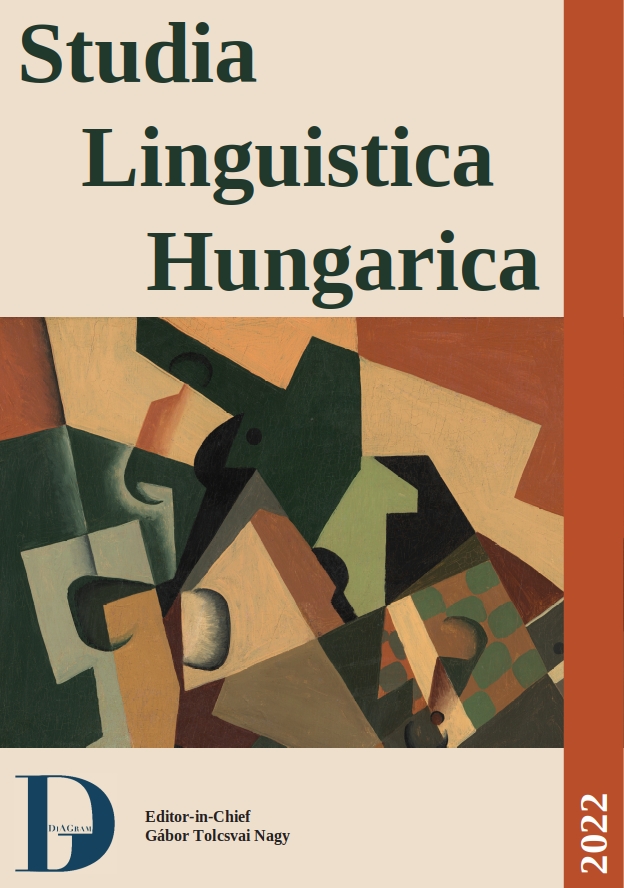Dogs know it, trees wait for it, and the wind snatches it
Verbal collexemes and semantic domains of noun + verb personifications in Hungarian
DOI:
https://doi.org/10.54888/slh.2022.34.5.21Keywords:
personification, corpus, collostruction, collexeme, conceptual domainAbstract
Verbal constructions of personification (i.e. nonhuman subject + predicate verb primarily used for human beings only) can be considered a key linguistic realization of personification. Although as grammatical metaphors they are rather invisible, the verb’s selection restrictions have a crucial role in expressing conceptual personification. In other words, the nominal form of personification as cross-domain mapping (e.g. WIND IS A THIEF ) is often realized via verb + argument structures (e.g. the wind grabbed the papers out of my hand). In a previous study, the domains of MOVEMENT , CONTROL and MENTAL ACT proved to be the most frequent conceptual categories of verbal personifications in a corpus of 20 th -century Hungarian poems. However, despite these initial findings, we have relatively little knowledge about what are the typical verbal components of personifications in Hungarian on a more general level.
The present paper aims to extend the scope of personification research, adopting corpus linguistic methodology to explore the semantic domains of verbal personification in Hungarian. In a collostructional analysis, I investigate the significant verbal collexemes of noun + verb personifications in the huTenTen12 corpus, using three categories of nominal keywords: animals (dog, horse, fish), plants (tree, fruit, flower) and inanimate natural phenomena (water, air, fire). The study hypothesises that verbs of MENTAL ACT will dominate the first category, MOVEMENT and CONTROL will be prominent among the verbal collexemes of nouns denoting personified natural phenomena, while the semantic domains of verbal personifications will be more heterogeneous in the realm of plants.

